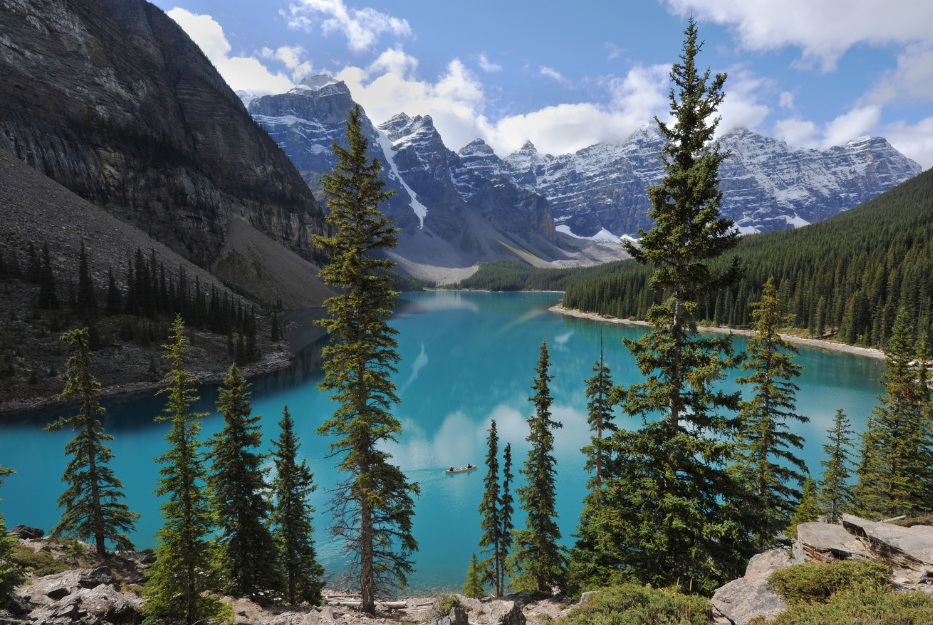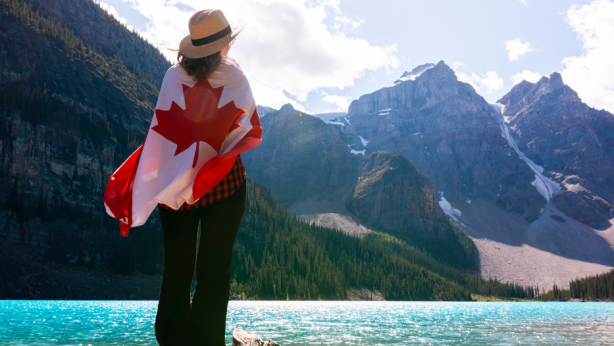How to Navigate Canadian Weather and Seasonal Changes (step-by-step guide)

**Please review the disclaimer at the end of this document before reading or using this guide.
Canada is known for its diverse and sometimes extreme weather conditions, with distinct seasonal changes that can vary significantly across the country. Understanding how to navigate these weather patterns is crucial for new immigrants as they settle into their new environment. This guide provides information on how new immigrants can prepare for and adapt to Canadian weather and seasonal changes.
Step 1: Understand Canadian Seasons
- Winter (December to February):
- Winters in Canada can be cold, with temperatures often dropping below freezing. Snowfall is common, especially in the northern and central regions.
- Coastal areas like Vancouver have milder winters with more rain than snow.
- Spring (March to May):
- Spring brings milder temperatures and melting snow. It can be unpredictable, with occasional cold spells and rain showers.
- Summer (June to August):
- Summers in Canada are generally warm, with temperatures ranging from mild to hot, depending on the region. Southern regions, such as Ontario and British Columbia, can experience temperatures over 30°C (86°F).
- Fall (September to November):
- Fall is marked by cooler temperatures and colorful foliage. It’s a transitional season leading back to winter, with temperatures gradually decreasing.
Step 2: Prepare for Winter
- Clothing Essentials:
- Winter Jacket: Invest in a high-quality, insulated winter jacket that can withstand cold temperatures and wind.
- Layering: Wear layers, including thermal underwear, sweaters, and fleece tops, to stay warm. Layering helps you adjust to varying indoor and outdoor temperatures.
- Footwear: Waterproof, insulated boots with good traction are essential for navigating snow and ice.
- Accessories: Don’t forget hats, gloves, scarves, and thick socks to protect against the cold.
- Home Preparation:
- Heating: Ensure your home’s heating system is working efficiently. Use space heaters or electric blankets if needed, but always follow safety guidelines.
- Insulation: Check windows and doors for drafts and seal them to keep the cold out and reduce heating costs.
- Winter Driving:
- Winter Tires: Install winter tires on your vehicle for better traction on snow and ice. They are mandatory in some provinces, such as Quebec.
- Emergency Kit: Keep an emergency kit in your car, including items like a blanket, flashlight, food, water, and a shovel.
- Snow Removal:
- Shoveling: Regularly shovel snow from driveways and sidewalks to prevent ice buildup and accidents. In many cities, homeowners are responsible for clearing the sidewalks in front of their homes.
- Ice Melt: Use salt or sand to melt ice and improve traction on walkways.
- Stay Active:
- Embrace winter activities like skiing, snowboarding, or ice skating to stay active and enjoy the season. Indoor gyms and community centers also offer winter-friendly fitness options.
Step 3: Embrace Spring
- Transition Clothing:
- As temperatures begin to rise, switch to lighter layers and a waterproof jacket to handle the mix of mild and rainy weather.
- Footwear: Waterproof shoes or boots are useful during this season as snow melts and rain is common.
- Gardening and Outdoor Activities:
- Spring is a great time to start gardening or participate in outdoor activities like hiking or biking. The weather can be unpredictable, so dress in layers.
- Allergy Preparation:
- If you suffer from seasonal allergies, be prepared for pollen and other allergens during spring. Over-the-counter antihistamines can help manage symptoms.
Step 4: Enjoy the Summer
- Clothing and Sun Protection:
- Light, breathable clothing is best for warm summer days. Don’t forget sunscreen, sunglasses, and hats to protect against the sun.
- Footwear: Comfortable sandals or sneakers are ideal for walking or outdoor activities.
- Stay Hydrated:
- Drink plenty of water to stay hydrated, especially during heat waves. Carry a reusable water bottle with you.
- Cooling Solutions:
- Use fans, air conditioners, or open windows to keep your home cool. Close blinds or curtains during the hottest part of the day to block out heat.
- Outdoor Activities:
- Take advantage of Canada’s beautiful summer weather by exploring parks, beaches, and lakes. Many cities host festivals and outdoor events during this season.
- Insect Protection:
- Protect yourself from mosquitoes and ticks by using insect repellent and wearing long sleeves and pants in wooded or grassy areas.
Step 5: Prepare for Fall
- Fall Wardrobe:
- As temperatures cool, switch back to warmer clothing, including sweaters, light jackets, and scarves. Layering remains important as the weather can vary throughout the day.
- Footwear: Sturdy shoes or boots are useful for walking through fallen leaves or wet ground.
- Home Preparation:
- Heating System Check: Before winter sets in, have your home’s heating system inspected and serviced.
- Leaf Cleanup: Rake leaves from your yard to prevent them from becoming slippery or clogging drains.
- Outdoor Activities:
- Enjoy the beauty of fall by taking part in activities like apple picking, hiking, or visiting pumpkin patches. The cooler weather makes it a perfect time for outdoor sports and exploring nature.
- Prepare for Shorter Days:
- As daylight hours decrease, make sure your home is well-lit and consider using light therapy lamps if you experience seasonal affective disorder (SAD).
Step 6: Monitor Weather and Stay Informed
- Weather Apps and Alerts:
- Use weather apps like The Weather Network or Environment Canada to stay updated on current weather conditions and forecasts.
- Sign up for weather alerts to receive notifications about severe weather, such as snowstorms or heatwaves.
- Understand Local Climate:
- Canada’s climate varies widely across the country. Understand the typical weather patterns of your specific region, whether you’re in coastal Vancouver, snowy Montreal, or prairie cities like Calgary and Winnipeg.
- Emergency Preparedness:
- Be prepared for weather-related emergencies by having an emergency kit with essentials like food, water, batteries, and a first-aid kit.
- Know your area’s emergency procedures, including how to stay safe during storms, power outages, or extreme weather events.
Additional Tips for New Immigrants
- Adapt Your Diet:
- In colder months, consider incorporating warm, hearty meals like soups and stews into your diet. In the summer, opt for lighter, refreshing foods.
- Stay Connected:
- Stay in touch with local community groups or online forums for tips on navigating Canadian weather, especially if you’re experiencing a Canadian winter for the first time.
- Plan Ahead:
- Prepare your home and vehicle for each season well in advance to avoid last-minute stress.
- Embrace the Seasons:
- Each season in Canada has its own unique charm. Embrace the changes and try to enjoy the different activities and experiences that each season offers.
Navigating Canadian weather and seasonal changes can be challenging, especially for new immigrants. By understanding the different seasons, preparing accordingly, and staying informed, you can adapt to Canada’s diverse climate and enjoy all that this beautiful country has to offer.
**DISCLAIMER: This document was prepared based on information gathered from various online sources. While our aim is to provide accurate and helpful information to newcomers in Canada, Active Action cannot be held responsible for any actions, outcomes, or situations that may arise from the use of this document. We strongly recommend that you verify any details with official sources or relevant authorities if you have any doubts or uncertainties about any information provided in this document. If you have any specific questions about the information in this document, or if you notice any inaccuracies or missing information, please inform us immediately through the contact form. We will respond to you as soon as possible and/or update the information as necessary.


